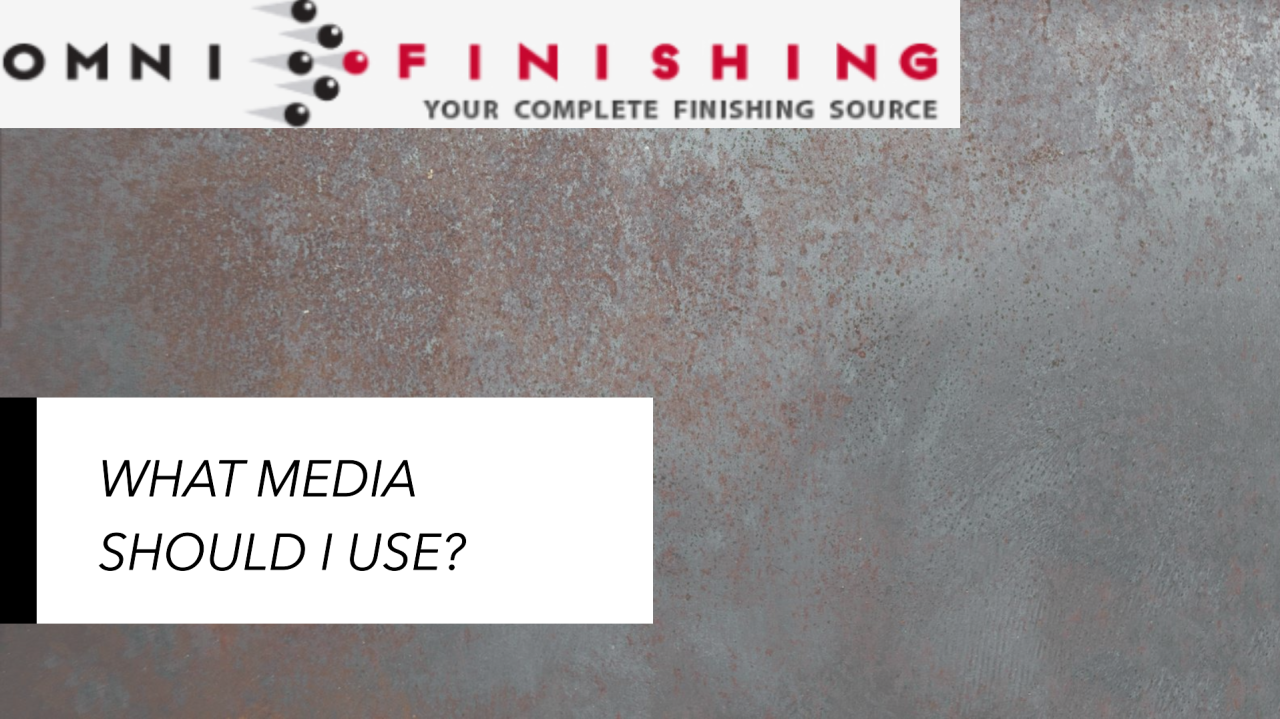Choosing the Right Media: A Comprehensive Guide
In the world of surface preparation, finishing, and material removal, selecting the appropriate media is crucial for achieving optimal results. Whether you’re working on metal, wood, or other materials, the right media can make a significant difference in the efficiency, quality, and cost-effectiveness of your work. This article explores various media types, their applications, and key considerations to help you make an informed choice.
Types of Abrasive Media
- Coal Slag: Often used in blast finishing and blast cleaning, Coal Slag is a traditional abrasive media. It’s the most inexpensive and effective for removing rust, paint, and other contaminants from surfaces.
- Aluminum Oxide: This Media produces an “anchor” pattern in preparation for recoating. It is great for removing heavy foreign matter and deburring. It is very fast cutting and can be used many times. There are many different sizes that will lead to a wide selection of finishes.
- Garnet: Garnet is another hard, fast cutting media. It removes heavy materials such as rust and weld scale and leaves a uniform anchor pattern.
- Glass Beads: Glass beads come in a wide variety of shapes and sizes and are generally the most popular media used in cabinets. This all purpose media is used for honing, polishing, peening, blending, cleaning and finishing.
- Steel Shot: Made from steel, this abrasive is commonly used in shot blasting for cleaning and strengthening metal surfaces. It’s particularly effective for removing scale, rust, and contaminants. Steel shot is durable and can be reused multiple times, making it a cost-effective choice for heavy-duty applications.
- Walnut Shells: These are biodegradable abrasives made from crushed walnut shells. They are gentle and non-toxic, making them suitable for cleaning and polishing delicate surfaces, including wood and soft metals. Walnut shells are often used in applications where a softer touch is required.
- Plastic: This media is relatively new and dust free. It is used for deflashing plastic parts and cleaning molds. It can also effectively deburr machine-ironed castings and non-ferrous screw machine parts.
- Ceramic: Known for their extreme hardness, ceramic media is used in high-performance grinding applications. They are effective for cutting through tough materials and are commonly found in high-speed grinding and cutting tools.
What to Consider When Choosing Abrasive Media
- Material of the Workpiece: The type of material you are working on will significantly influence your choice of abrasive. For example, harder materials like metal require more durable abrasives like aluminum oxide or ceramic, while softer materials might be better suited for walnut shells or plastic abrasives.
- Desired Finish: The finish quality you need will determine the abrasive type. For a smooth, polished finish, glass beads or fine garnet may be appropriate, whereas a rougher surface might need coarser abrasives like steel shot or aluminum oxide.
- Application Method: Different abrasives are suited to different methods, such as blast finishing, grinding, or polishing. Ensure that the abrasive media is compatible with your equipment and application process.
- Health and Safety: Consider the safety implications of the media you choose. For instance, silica sand can pose health risks if inhaled, while materials like plastic or walnut shells are generally safer to use.
- Environmental Impact: Some media is more environmentally friendly than others. For instance, biodegradable options like walnut shells are less harmful to the environment compared to synthetic media.
- Cost and Reusability: Evaluate the cost-effectiveness of the media. Some materials, like steel shot, can be reused multiple times, offering better long-term value compared to single-use abrasives.
Conclusion
Selecting the right media requires a careful assessment of your specific needs, including the material you are working with, the type of finish required, and safety considerations. By understanding the properties and applications of various media, you can make an informed decision that enhances the efficiency and quality of your work. Whether you opt for the durability of aluminum oxide, the gentle touch of walnut shells, or the precision of garnet, the right abrasive can significantly impact the success of your project.
NOTE: Sand is never recommended for Blasting.



